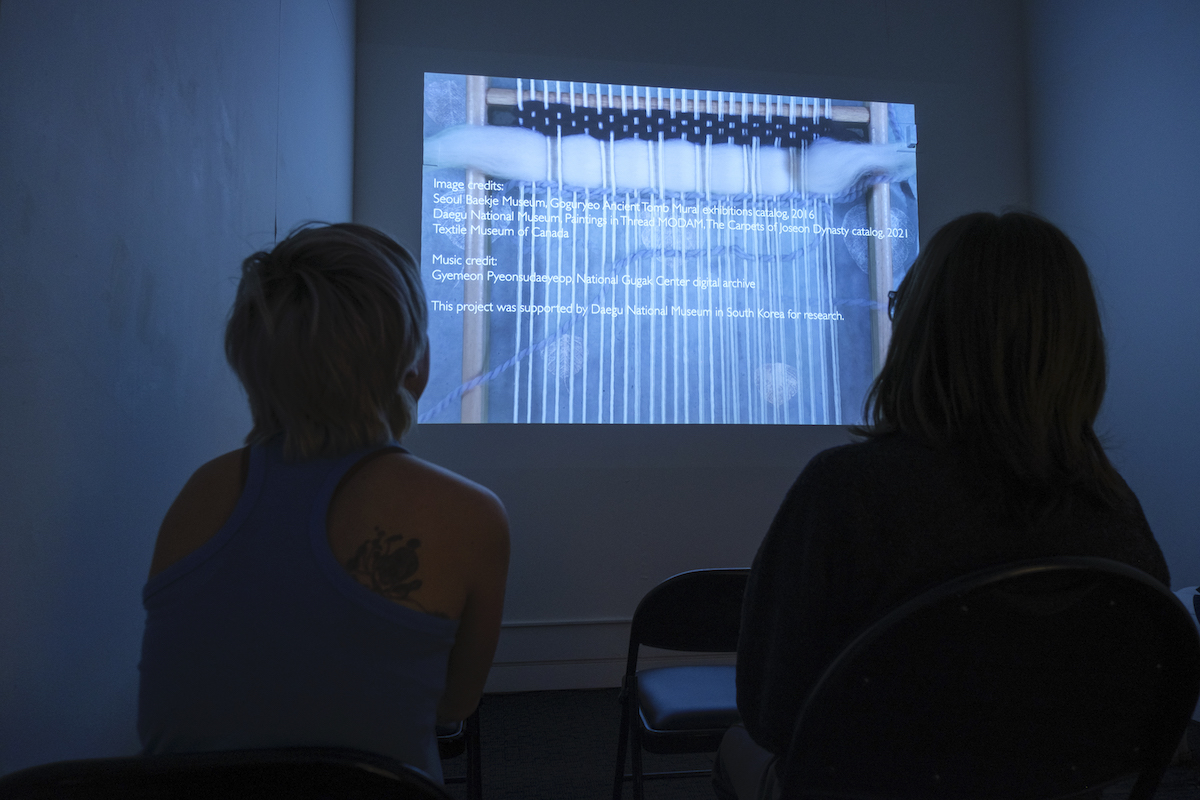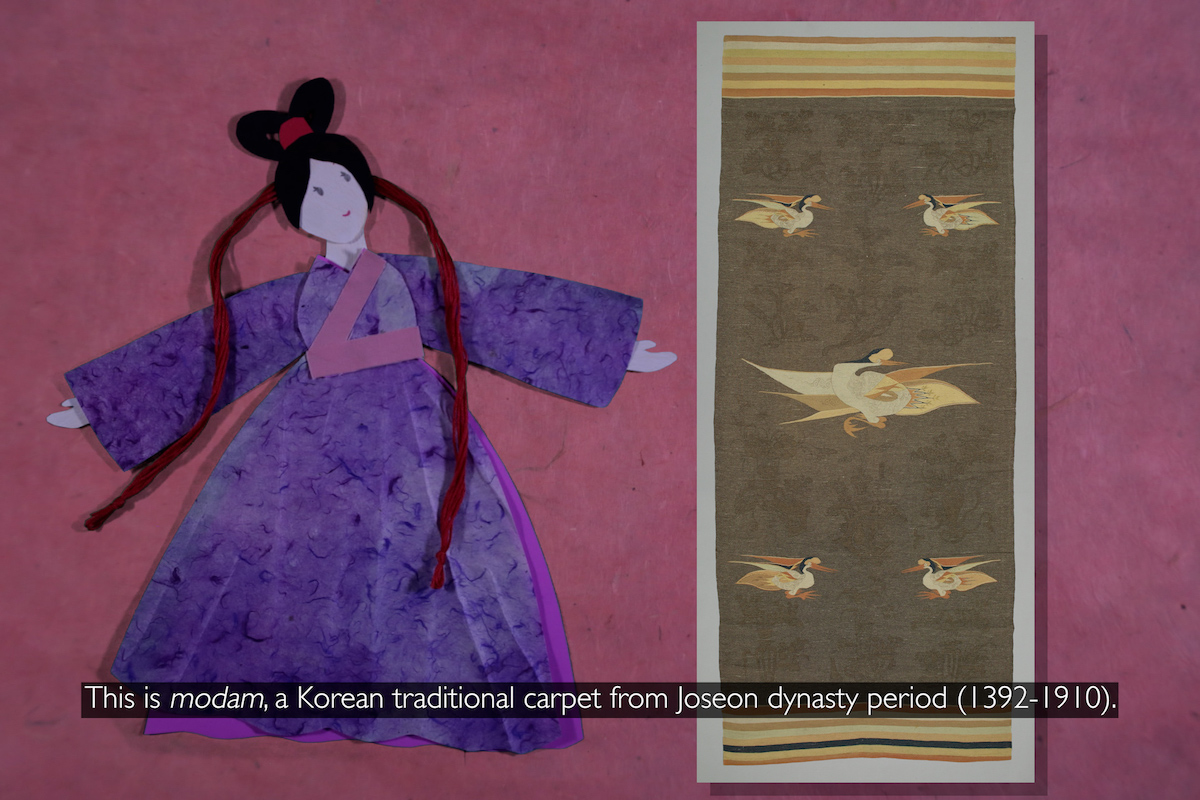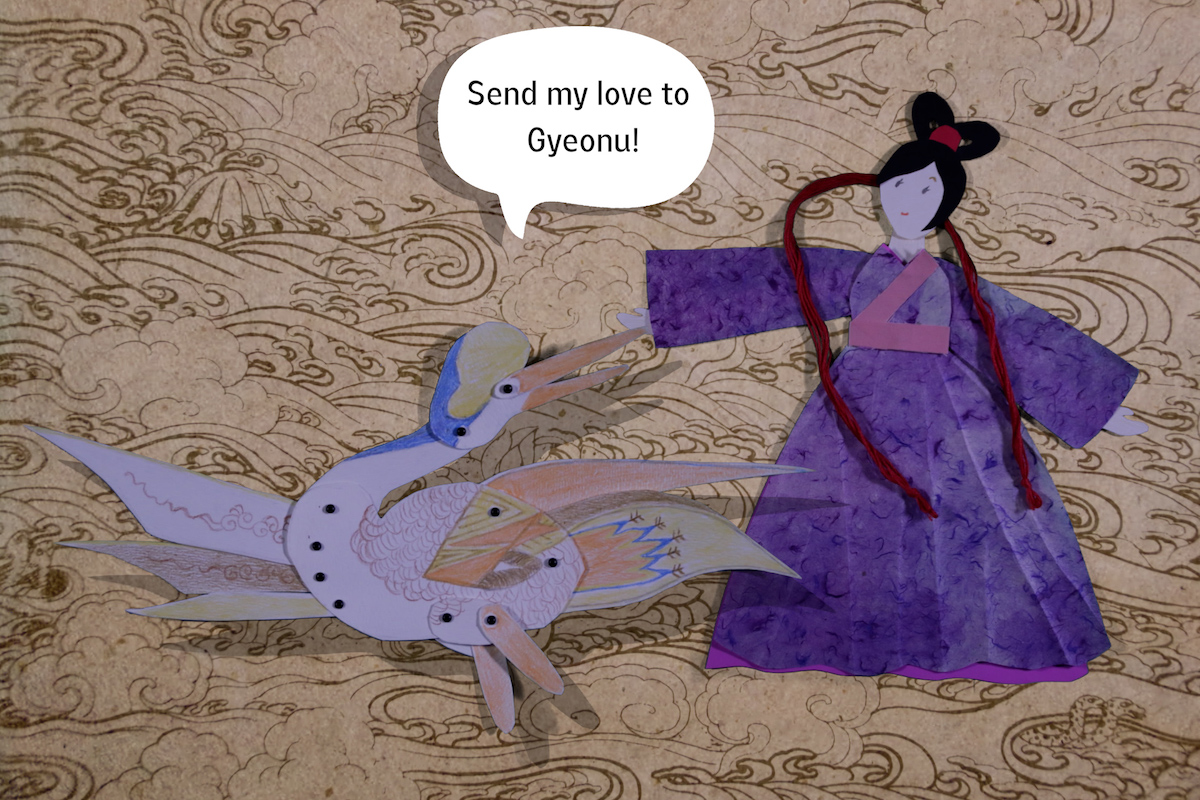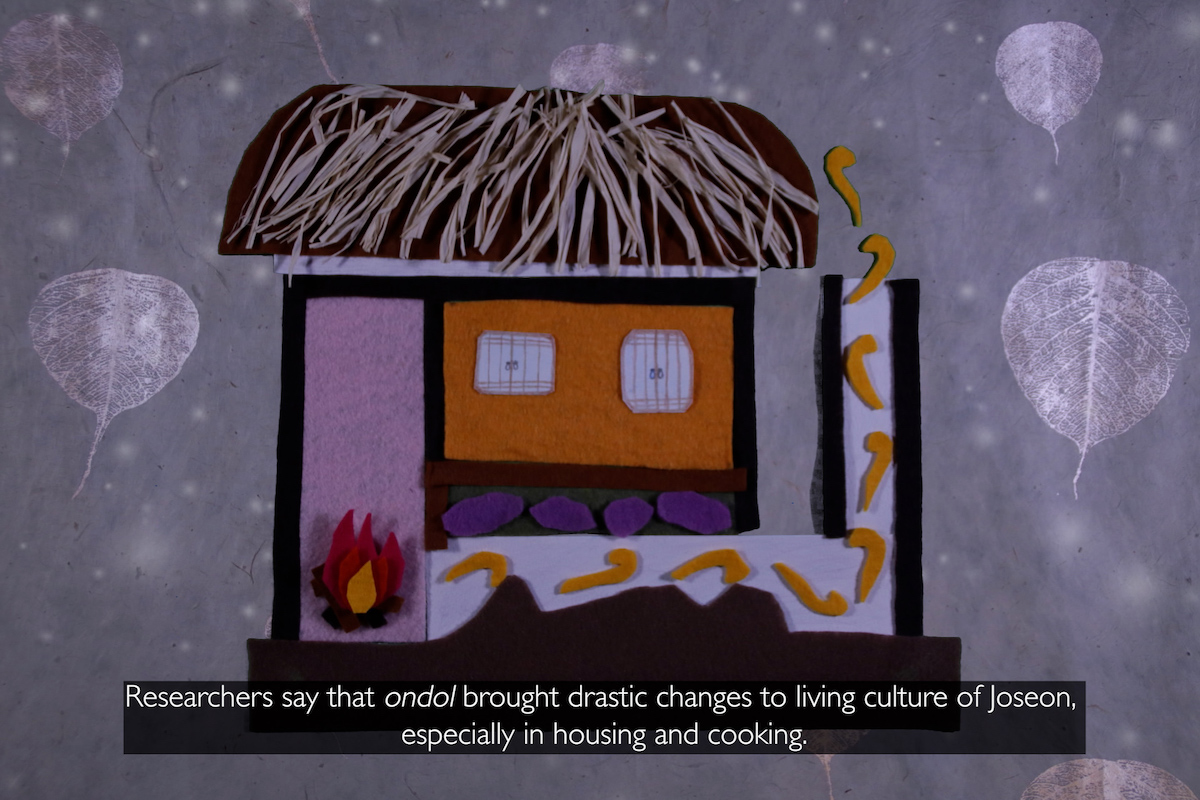
ARTIST STATEMENT
My main practice involves making films and videos, however, I’ve always been interested in experimenting with different mediums and possible ways to integrate them into moving image practice. I became very interested in textiles, particularly in weaving when I came to Canada and worked with the weavers and spinners group in Kingston to conduct their oral history project. Learning about the interesting relationship between weaving and computing; the processes, social and cultural entanglement as well as the connected history, I’ve been interested in ways to somehow integrate various aspects of weaving into moving image practice.
I’ve stumbled upon modam, a traditional Korean woolen carpet from the Joseon dynasty (1392-1910) that I found in the Textile Museum of Canada’s online collection. I was immediately interested in this object because I didn’t know we had our own carpets. Traditional Korean tapestry is not a well-known practice, being unfamiliar to a lot of Koreans because the practice slowly disappeared and only a few of them remain in the world. This is arguably because by the 17th century, ondol, the traditional Korean underfloor heating system was widely supplied in households and people no longer needed carpets to insulate the floor. Many of these carpets were exported to Japan through the Korean Mission to Japan and served as decoration for carriages in the Gion Matsuri festival in Kyoto. Recently, there has been an ongoing effort to introduce modam and its history to the public and research them in a few Korean museums.
Upon getting to know about this history of modam, I wanted to make a video about it for the Digital Creative Response project that I was contracted for the Textile Museum of Canada. I wanted to briefly tell what this carpet was, how it disappeared and its distinct characteristics in a short video. I incorporated the ancient folk tale of Gyeonu and Jingnyeo (The Cowherd and the Weaver Girl) to tell the story because although the tradition of modam disappeared, records show that we have a long history of patterned wool carpets since the Three Kingdoms Period (57 BC to 668 AD). I tried to make the video visually interesting by using paper-cut puppets and some stop-motion animation.


